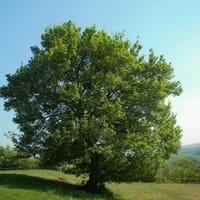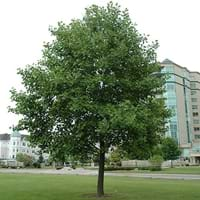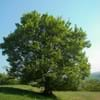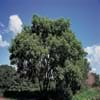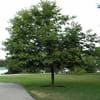Life Span
Perennial
Perennial
Origin
Europe, Northern Africa, Western Asia
Northeastern United States, Mid-Atlantic United States, Southeastern United States, Central United States
Types
A. campestre var. campestre - downy fruit
A. campestre var. leiocarpum (Opiz) Wallr. (syn. A. campestre subsp. leiocarpum) - hairless fruit
Ardis, Arnold, Aureomarginatum
Habitat
Forest margins, gardens, Suburban areas, Woods
Bluffs, low mountains, Moist Soils, Woodlands
USDA Hardiness Zone
5-8
5-9
Sunset Zone
2a, 2b, 3a, 3b, 4, 5, 6, 7, 8, 9, 14, 15, 16, 17
1a, 1b, 2a, 2b, 3a, 3b, 4, 5, 6, 7, 8, 9, 10, 11, 12, 14, 15, 16, 17, 18, 19, 20, 21, 22, 23
Habit
Oval or Rounded
Pyramidal
Flower Color
Green, Light Yellow
Orange, Light Yellow
Flower Color Modifier
Bicolor
Bicolor
Fruit Color
Light Yellow, Light Pink, Light Green, Tan
Lime Green, Brown
Leaf Color in Spring
Green, Light Green
Green, Light Green
Leaf Color in Summer
Dark Green
Green
Leaf Color in Fall
Yellow, Gold, Tan
Yellow, Light Yellow, Yellow green
Leaf Shape
Maple shaped
Irregular
Plant Season
Spring, Summer, Fall
Spring, Fall
Sunlight
Full Sun, Partial Sun
Full Sun, Partial Sun
Type of Soil
Clay, Loam, Sand
Clay, Loam
The pH of Soil
Acidic, Neutral, Alkaline
Acidic, Neutral
Soil Drainage
Average
Average
Bloom Time
Early Spring
Late Spring
Tolerances
Pollution, Soil Compaction
Soil Compaction
Where to Plant?
Ground
Ground
How to Plant?
Grafting, Seedlings, Transplanting
Seedlings
Plant Maintenance
Medium
Low
Watering Requirements
Needs watering once a week, Requires watering in the growing season
Do Not over Water, Keep the ground moist but not water-logged, Requires regular watering
In Summer
Lots of watering
Ample Water
In Spring
Moderate
Moderate
In Winter
Average Water
Average Water
Soil pH
Acidic, Neutral, Alkaline
Acidic, Neutral
Soil Type
Clay, Loam, Sand
Clay, Loam
Soil Drainage Capacity
Average
Average
Sun Exposure
Full Sun, Partial Sun
Full Sun, Partial Sun
Pruning
Prune if you want to improve plant shape, Prune in winter, Prune to stimulate growth, Remove damaged leaves, Remove dead leaves, Remove deadheads
Prune ocassionally, Remove dead branches
Fertilizers
All-Purpose Liquid Fertilizer
All-Purpose Liquid Fertilizer, fertilize in spring, Fertilize the soil instead of direct applying, Mulch
Pests and Diseases
Fungal Diseases
fusarium canker, nectria canker, yellow-poplar weevil
Plant Tolerance
Drought
Soil Compaction
Flowers
Insignificant
Showy
Flower Petal Number
Single
-
Foliage Texture
Medium
Coarse
Foliage Sheen
Glossy
Matte
Aesthetic Uses
Showy Purposes
Showy Purposes
Environmental Uses
Air purification
Shadow Tree, Shelter for wildlife
Medicinal Uses
Sore Eyes
Arthritis, Digestion problems, Fever, Inflammation, Wounds
Part of Plant Used
Bark, Sap
Whole plant
Other Uses
Grown for shade, Used in Furniture, Used in making musical instruments
Food for animals, Grown for shade, Used as Ornamental plant, Used in Furniture
Used As Indoor Plant
No
No
Used As Outdoor Plant
Yes
Yes
Garden Design
Feature Plant, Hedges, Screening / Wind Break, Shade Trees
Feature Plant, Shade Trees, Street Trees
Botanical Name
ACER campestre
LIRIODENDRON tulipifera
Common Name
Field Maple, Hedge Maple
Tulip Poplar, Yellow Poplar
In Hindi
फील्ड मेपल
ट्यूलिप पेड़
In German
Feld-Ahorn
Tulpenbaum
In French
Maple terrain
tulipier
In Spanish
arce de campo
árbol de tulipán
In Greek
Το πεδίο Maple
δέντρο τουλίπα
In Portuguese
bordo de campo
árvore de tulipa
In Polish
Klon polny
tulipanowiec
In Latin
Field Maple
Tulipa arbore
Phylum
Magnoliophyta
Tracheophyta
Class
Magnoliopsida
Magnoliopsida
Order
Sapindales
Magnoliales
Family
Aceraceae
Magnoliaceae
Clade
Angiosperms, Eudicots, Rosids
Angiosperms, Magnoliids
Subfamily
Hippocastanoideae
-
Season and Care of Field Maple and Tulip Tree
Season and care of Field Maple and Tulip Tree is important to know. While considering everything about Field Maple and Tulip Tree Care, growing season is an essential factor. Field Maple season is Spring, Summer and Fall and Tulip Tree season is Spring, Summer and Fall. The type of soil for Field Maple is Clay, Loam, Sand and for Tulip Tree is Clay, Loam while the PH of soil for Field Maple is Acidic, Neutral, Alkaline and for Tulip Tree is Acidic, Neutral.
Field Maple and Tulip Tree Physical Information
Field Maple and Tulip Tree physical information is very important for comparison. Field Maple height is 910.00 cm and width 910.00 cm whereas Tulip Tree height is 1,830.00 cm and width 1,070.00 cm. The color specification of Field Maple and Tulip Tree are as follows:
Field Maple flower color: Green and Light Yellow
Field Maple leaf color: Green and Light Green
Tulip Tree flower color: Orange and Light Yellow
- Tulip Tree leaf color: Green and Light Green
Care of Field Maple and Tulip Tree
Care of Field Maple and Tulip Tree include pruning, fertilizers, watering etc. Field Maple pruning is done Prune if you want to improve plant shape, Prune in winter, Prune to stimulate growth, Remove damaged leaves, Remove dead leaves and Remove deadheads and Tulip Tree pruning is done Prune ocassionally and Remove dead branches. In summer Field Maple needs Lots of watering and in winter, it needs Average Water. Whereas, in summer Tulip Tree needs Ample Water and in winter, it needs Average Water.
